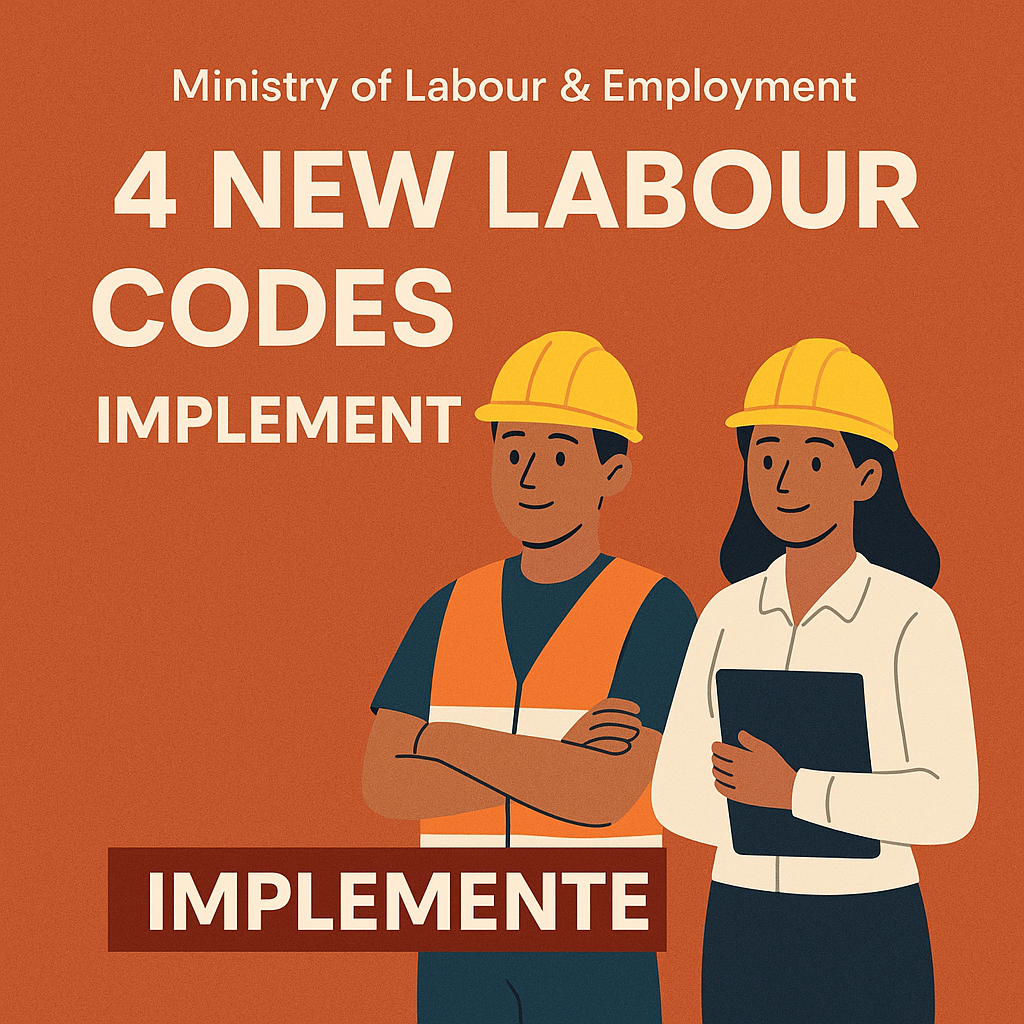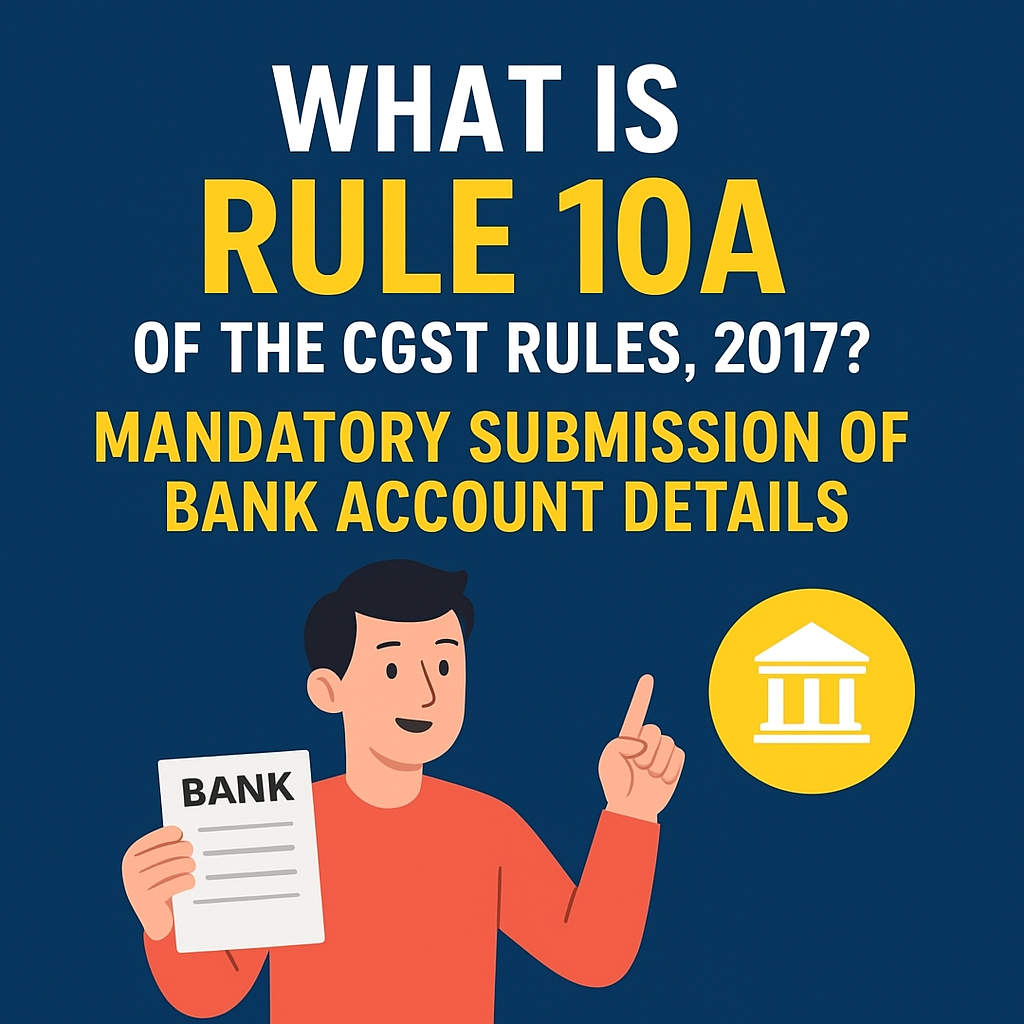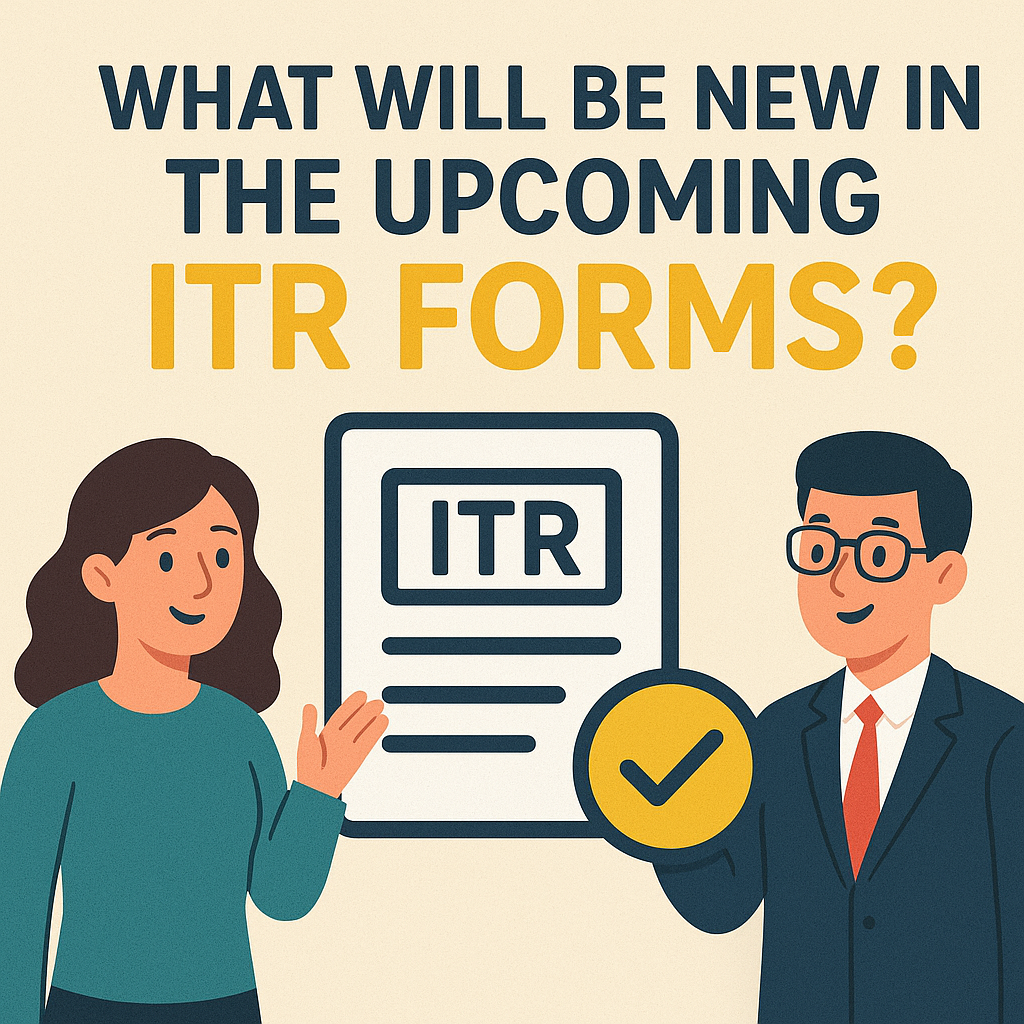Important Update for All Employees! The New Labour Codes 2025 and All Four Revised Labour Laws Are Now in Effect
On 21 November 2025, the Ministry of Labour & Employment announced the long-awaited implementation of all four Labour Codes — a transformative consolidation of 29 Central labour laws into four simplified, modern, and comprehensive Codes:
- Code on Wages, 2019
- Industrial Relations Code, 2020
- Code on Social Security, 2020
- Occupational Safety, Health and Working Conditions (OSHWC) Code, 2020
This landmark move modernises India’s labour framework, improves worker protection, simplifies compliance for industries, and aligns India with global labour standards — a major reform supporting Aatmanirbhar Bharat.
Why Labour Reforms Were Needed
Most existing labour laws were drafted between 1930 and 1950, when the nature of work, employer–employee relationships, and industry structures were vastly different. Over the years, global economies have consolidated and upgraded their labour laws, but India continued to function under fragmented, outdated, and complex regulations.
Challenges under the old regime included:
- Multiple registrations and returns
- Unequal wage protection
- Limited coverage of PF, ESIC, and social security
- Restrictions on women’s employment
- High compliance burden on MSMEs
- Lack of protection for gig, platform, and fixed-term workers
The new Labour Codes bring a uniform, transparent, and technology-driven labour ecosystem that strengthens both worker welfare and industrial productivity.
Before vs After: Key Transformations Under the Four Labour Codes
The following table summarises the shift from the old system to the new labour regime:
1. Formalisation of Employment
- Earlier: Appointment letters not mandatory
- Now: Mandatory written appointment letters for all workers → transparency, job security, formal recognition
2. Social Security Coverage
- Earlier: Limited coverage; gig/platform workers not recognised
- Now: PF, ESIC, insurance & other benefits available to all workers, including gig & platform workers
3. Minimum Wages
- Earlier: Applied only to scheduled industries; many workers excluded
- Now: Statutory minimum wages for all workers under the Code on Wages
4. Preventive Healthcare
- Earlier: No mandatory annual check-ups
- Now: Free annual health check-up for all workers aged 40+
5. Timely Payment of Wages
- Earlier: No uniform requirement
- Now: Mandatory timelines for wage payment → enhanced financial stability
6. Women in Workforce
- Earlier: Restrictions on night shifts and certain occupations
- Now: Women permitted in all jobs and night shifts with consent & safety measures → equal opportunities
7. ESIC Coverage
- Earlier: Limited to notified areas & certain industries
- Now:Pan-India coverage, including:
- Voluntary for establishments < 10 employees
- Mandatory for even 1 worker in hazardous units
8. Compliance Burden
- Earlier: Many licences, separate registrations, multiple returns
- Now: Single registration, single licence, single return → low compliance burden
Sector-wise Benefits Under the Labour Codes
1. Fixed-Term Employees (FTE)
- FTEs get all benefits equal to permanent workers
- Gratuity eligibility after 1 year (instead of 5 years)
- Equal wages & better protection
- Encourages direct hiring, reduces contract labour exploitation
2. Gig & Platform Workers
For the first time, the Codes legally define:
- Gig workers
- Platform workers
- Aggregators
Key provisions:
- Aggregators to contribute 1–2% of annual turnover (capped at 5% of worker payouts)
- Aadhaar-linked Universal Account Number ensures portability of benefits across states
On 21 November 2025, the Ministry of Labour & Employment officially confirmed that the long-discussed labour law overhaul is now a reality. India has put into force all four new Labour Codes, replacing 29 separate Central labour laws with a unified, updated, and simplified framework. These four Codes are:
-
Wages Code, 2019
-
Industrial Relations Code, 2020
-
Social Security Code, 2020
-
Occupational Safety, Health & Working Conditions Code, 2020
This marks one of the biggest reforms in India’s labour system, aimed at strengthening worker rights, reducing compliance burden for employers, and bringing India’s labour ecosystem in line with international standards—supporting the government’s broader push towards Aatmanirbhar Bharat.
(Click here for the official press release.)
Why Did India Need These New Labour Codes?
For decades, India relied on labour laws written in the early to mid-20th century. These laws were created for an era with different industries, limited technology, and a smaller workforce. As the economy grew, these outdated laws became complex, overlapping, and difficult to comply with.
The old system had several issues:
-
Multiple registrations and numerous return filings
-
Minimum wage inconsistencies across sectors
-
Many workers excluded from PF, ESIC, and social security
-
Restrictions on women’s working hours and roles
-
High compliance costs for small and medium businesses
-
No legal coverage for gig workers, platform workers, or fixed-term employees
By replacing 29 laws with 4 broad codes, the government has created a centralised, transparent, and digitally integrated labour system that benefits both workers and employers.
Before vs After: Key Reforms Under the Labour Codes
1. Job Formalisation
-
Earlier: Appointment letters often not issued
-
Now: Appointment letters are compulsory for all workers → better protection & clarity
2. Wider Social Security Access
-
Earlier: Only workers in certain industries were covered
-
Now: PF, ESIC, maternity and other social security benefits extend to all worker categories, including gig and platform workers
3. Universal Minimum Wage
-
Earlier: Minimum wages applied only to specific scheduled sectors
-
Now: Every worker is entitled to statutory minimum wages
4. Health Benefits
-
Earlier: No rule for regular medical check-ups
-
Now: Annual health check-up is mandatory for workers aged 40+
5. Standard Wage Payment Timelines
-
Earlier: No uniform rule
-
Now: Strict deadlines ensure timely payment of wages
6. More Opportunities for Women
-
Earlier: Women faced restrictions in certain jobs and in night work
-
Now: Women can work across all sectors, including night shifts, with consent and safety measures
7. ESIC for All Regions
-
Earlier: ESIC limited to notified areas
-
Now: ESIC available across the country, including:
-
Voluntary coverage for units with <10 workers
-
Mandatory for hazardous establishments even with 1 worker
-
8. Simpler Compliance Structure
-
Earlier: Many licences, registrations and separate returns
-
Now: Single registration, single licence, single return → easier compliance for businesses
Who Benefits the Most?
1. Fixed-Term Employees (FTEs)
-
Same benefits as permanent staff
-
Eligible for gratuity after 1 year
-
Equal wages and protections
-
Promotes direct hiring instead of contract labour
2. Gig Workers & Platform Workers
For the first time, these categories are legally recognised.
Key features:
-
Aggregator platforms must contribute 1–2% of turnover to social security (capped at 5% of payouts)
-
Workers get Aadhaar-linked Universal Account Numbers ensuring portability of benefits
3. Contract Workers
-
Contract labour will now receive the same social security and health-related benefits as permanent employees.
-
Annual medical check-ups are compulsory.
-
Fixed-Term Employees (FTEs) become eligible for gratuity after completing just one year.
-
The primary employer is accountable for ensuring contractor workers’ welfare.
4. Women Workers
-
Equal pay for equal work is mandated across sectors.
-
Women can work in night shifts, hazardous environments, mining, and heavy machinery—subject to their consent and adequate safety protocols.
-
The definition of “family” now includes parents-in-law.
-
Every workplace grievance committee must include women representatives.
5. Young Workers
-
Minimum wages are guaranteed for youth entering the workforce.
-
Written appointment letters are compulsory.
-
Wages must be paid even when the worker is on leave.
-
A national floor wage ensures a decent standard of living.
6. MSME Workforce
-
All MSME workers fall under the Social Security Code.
-
Minimum wage protection is universal.
-
Employers must provide drinking water, rest spaces, canteens, and basic safety measures.
-
Working hours, overtime rules, and paid leave are standardised.
-
Timely payment of wages is mandatory.
7. Beedi & Cigar Workers
-
Minimum wages apply to all workers in the sector.
-
Working hours capped at 8–12 hours per day and 48 hours weekly.
-
Overtime must be paid at double the regular wage rate.
-
Workers become eligible for bonus after 30 days of employment.
8. Plantation Workers
-
Fully covered under the OSHWC and Social Security Codes.
-
Applicable to plantations with over 10 workers or 5 hectares+.
-
Mandatory safety training, PPE, and safe working conditions.
-
ESIC benefits extend to workers and their families.
-
Education facilities for workers’ children are required.
9. Audio-Visual & Media Personnel
-
Covers journalists, voice artists, stunt performers, and more.
-
Appointment letters are obligatory.
-
Wages must be paid promptly.
-
Overtime compensation at double wages.
-
Full social security coverage is ensured.
10. Mine Workers
-
Travel-related accidents are treated as employment-related (subject to conditions).
-
National occupational safety standards apply.
-
Annual free medical check-ups for all mine workers.
-
Work hours capped at 8–12 hours/day, 48 hours/week.
11. Workers in Hazardous Industries
-
Free annual medical examinations are compulsory.
-
Uniform national safety guidelines must be followed.
-
Women can be employed even in hazardous roles with safeguards.
-
Safety committees must be set up at every hazardous site.
12. Textile Sector Employees
-
Migrant and permanent workers receive equal wages and welfare benefits.
-
Claims for outstanding dues can be filed up to 3 years.
-
Overtime payments are mandatory at double the wage rate.
13. IT & ITeS Employees
-
Salaries must be credited no later than the 7th of every month.
-
Women are permitted night shifts with adequate protection.
-
Grievances on wages and harassment must be resolved swiftly.
-
Appointment letters and equal pay for equal work are compulsory.
14. Dock Workers
-
Appointment letters required for every worker.
-
PF, pension, and insurance benefits apply to contract and temporary workers as well.
-
Employers must fund annual medical check-ups.
-
Hygiene, welfare, and first-aid facilities are mandatory.
15. Export Industry Workers
-
Fixed-term workers entitled to gratuity, PF, and other social security benefits.
-
Eligible for annual leave after 180 days of service.
-
Timely wage payment is compulsory; overtime paid at double the rate.
-
Women can work night shifts with their consent and safety measures.
Additional Major Reforms Under the Labour Codes
-
Introduction of a National Floor Wage across India.
-
Gender-neutral provisions, including protections for transgender workers.
-
Inspector-cum-Facilitator model promoting support before penalties.
-
Faster dispute settlement through upgraded Industrial Tribunals.
-
One licence and one registration for working condition compliance.
-
National OSH Board for safety standard-setting.
-
Mandatory safety committees for establishments with 500+ workers.
-
Higher factory thresholds to ease compliance for smaller units.
Transitional arrangements ensure that earlier laws will continue until notifications under the new Codes are fully operational.
Impact on India’s Social Security Framework
India’s social security coverage increased from 19% (2015) to 64% (2025). The new Codes further strengthen this by ensuring:
-
Universal and portable social security benefits
-
Protection for gig workers, platform workers, migrant labour, women, and young workers
-
Reduced compliance burden on employers
-
Improved job creation and workforce skilling
Conclusion
The implementation of the four Labour Codes is the most significant labour policy transformation in India’s history. It modernises labour governance, enhances worker rights, simplifies compliance for industries, and prepares the workforce for the demands of a fast-evolving economy. This progressive shift strengthens a worker-centric, youth-focused, gender-equal, and employment-driven ecosystem—accelerating India’s path toward a stronger, future-ready, and self-reliant nation.





